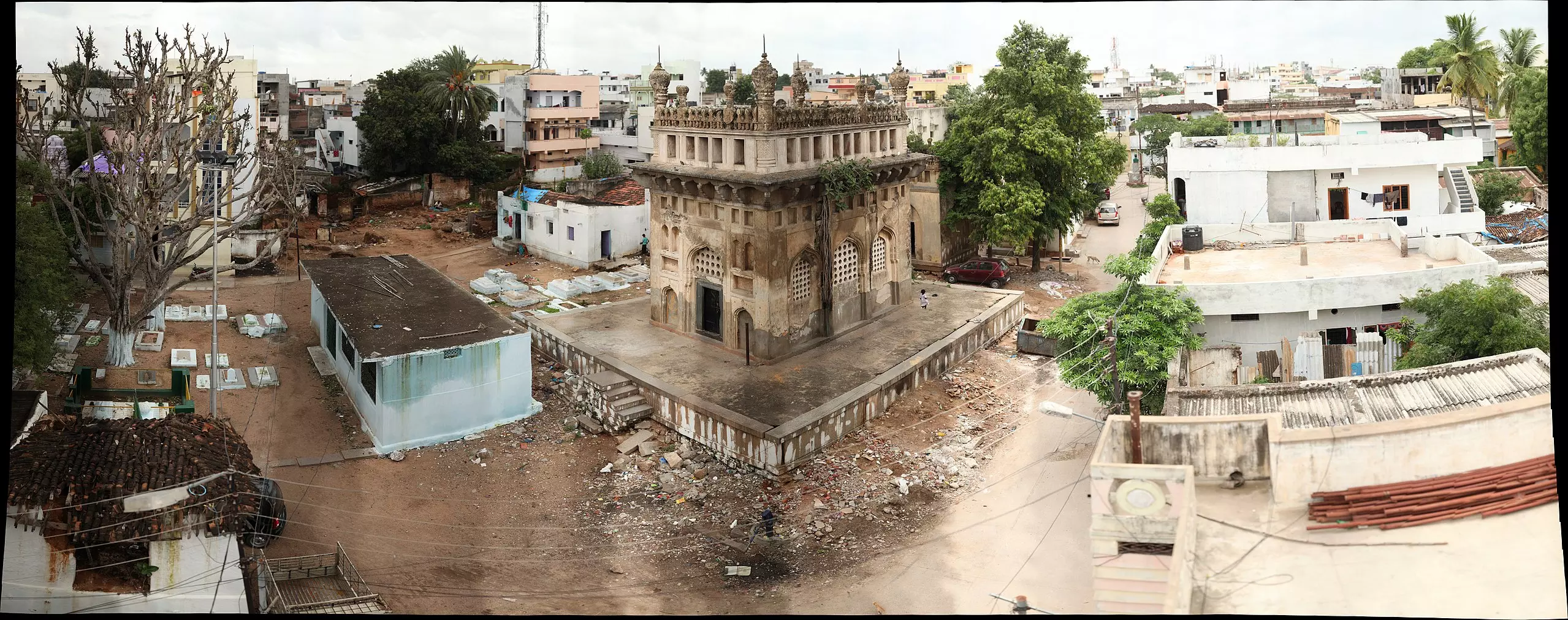Qutb Shahi envoy’s tomb in Hyderabad lies in ruins

Hyderabad: The tomb of Khairat Khan Sar Naubat, a Qutb Shahi ambassador to the Persian emperor, sits in ruins after years of neglect without maintenance. It is a fine monument with intricate artwork and historical style is completely abandoned as many other historical structures in Hyderabad, despite being listed as a protected monument under the government of Telangana.
The monument has two structures — one main structure having tombs of Khairat Khan and his son and another smaller one where Khairat Khan’s wife is laid to rest.
“The headstone of the grave shows that the death of Khairat Khan occurred on 18th Ramzan 1066 A.H. (1655 A.D.) and his minor son Abdullah died five months earlier, on 5th RabiusSani 1066 A.H. (1655 AD); that is why the grave of his son occupies the central portion of the dome,” says Syed Ali Asgar Bilgrami in 1927 book “Landmarks of the Deccan: A Comprehensive Guide to the Archaeological Remains of the City and Suburbs of Hyderabad”.
Khairat Khan was a Qutb Shahi nobleman. He was appointed by the seventh ruler of Golconda, Abdullah Qutb Shah, as the ambassador to Persia in 1625. He was the ambassador to Persian King Shah Abbas Safavi, popularly known as Abbas the Great.
Quoting Persian historical book Hadiqatus-Salatin, Bilgrami wrote, “Khairat Khan Sar Naubat, was deputed by Sultan Abdullah Qutb Shah VII, as an ambassador to the court of Shah Abbas Safavi, and was sent from Hyderabad with valuable presents in company with Muhammad Quli Beg son of Qasim Beg, the Persian Ambassador.”
“Emperor Shah Jahan sent for him from Surat which was the chief port of embarkation at that period and he also gave Khairat Khan a letter to the Shah of Persia.”
After coming back to Hyderabad in 1634, Khairat Khan served the Golconda rulers and constructed several store stands in Musa Burj near Golconda Fort. He later passed away in 1655.
While the main structure has been padlocked since the past four years, the structure of Khairat Khan’s wife’s tomb is open. Locals said the secondary structure has become a spot for drunkards and addicts to do their bootleg deeds. The monument is full of overgrown weeds and plants.
In mid-2010’s, the government constructed a platform over the stone structure to act as a strengthening platform for the tomb. That base is completely shattered, which exposed the semi-hollow basement of the tomb.
Speaking to Deccan Chronicle, Sasi Narayan, a localite, said: “The monument is extremely beautiful. The minars (minarets) resemble Charminar, while the railing resembles Qutb Shahi Tombs and the entire structure strikes resemblance to Golconda Fort. It is a masterpiece.”
Another local, who requested anonymity, said the tomb belongs to a mosque situated behind the monument. They said the mosque runners tried getting money from the government and Waqf boards and also tried selling the monument, but as they could not do so, they eventually left the place.
The structure has massive trees growing from its sides, while the minarets are visibly crumbling and the entire structure is mossy. The locals converted the monument premises into a garbage and urinary spot.

